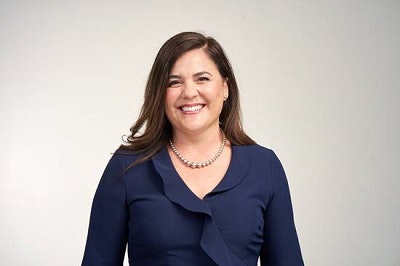The Campaign for College Opportunity released a new report Tuesday detailing the state of Black higher education in California. While progress has been made in a number of areas, the report’s authors found gaps in Black students’ college preparedness and persistent disparities when it comes to college completion.
According to the report, titled “2021 State of Higher Education for Black Californians,” 88% of Black 19-year-olds in the state have a high school diploma, and 80% of Black high school graduates who meet the state’s A-G course requirements for college readiness enroll in college within one year. But 60% of Black high school graduates do not meet these requirements, and thus only 60% of Black students overall in the state enroll in college within one year of graduation.
 Michele Siqueiros
Michele Siqueiros“We know that Black students [disproportionately] attend schools that don’t have strong access to the A-G courses … which means you can graduate high school without being prepared for college,” said Campaign for College Opportunity President Michele Siqueiros. “Students are often tracked based on very real racial biases,” which impact what level of access they have to college prep courses. In many school districts that serve high populations of Black and Brown students, these are not a part of the default curriculum, “which means you can graduate high school without being prepared for college,” she added.
Changes to community college transfer practices have helped increase access to transfer-level courses, a change that is particularly important for Black students, more than half of whom are identified as students who would benefit from additional academic support in college. And the state’s two public university systems, the California State University system and the University of California system, are also seeing an increase in the number of Black students on campus. Black student applications to the University of California increased by over 20% this year, and 26% of Black Californians now have a bachelor’s degree, and 10% have an associate degree. Two-thirds of Black Californians between 25-64 have enrolled in college.
But gaps still persist.
While more than 50% of Black students entering the UC System since 2012 graduated in four years or fewer, and 75% graduated within six years, accounting for the highest Black graduation rate across the state, Black student graduation rates remain roughly 20% lower than the rates for their White counterparts. At CSU, though more Black students are graduating, the gap between Black and White student graduation has actually increased from 21 to 25 percentage points.
Siqueiros said in order to address the gap, college leaders must “be very intentional and unabashed about how to support Black students.”
“That can’t happen if you’re not talking to Black students, if you don’t have Black faculty and staff in front of Black students, and if you’re not looking at the policies that have traditionally negatively impacted Black students,” she said. “The results we have today are a result of the policies and practices that we have chosen to accept. We absolutely can change those policies and practices to better support Black students.”
Remedial course placement and access to courses are among those policies Siqueiros cited, pointing to the state’s success with Black students passing transfer-level courses in the community college system. The report found that 48% of Black students who enrolled in 2019 completed transfer-level English in their first term, compared to just 15% in 2015. And 72% percent of Black students enrolled directly in transfer-level math in fall 2019, compared to 12% in fall 2015, yielding a pass rate of 27% in 2019, versus 7% in 2015.
“There’s been a lot of great work … to include outreach and support (from higher ed leaders) and offering of A-G courses online to students who don’t have access to them at their schools,” Siqueiros said. “I think part of the problem and challenge is that our education systems can often be very siloed from each other. If a high school leader doesn’t feel like it was his or her responsibility to prepare students for college — a lot of school leaders feel like their responsibility is to get students to graduation, not to college.”
“One of the problems that California continues to have is that we don’t have an education coordinating body that really brings K-12, community colleges, Cal State (institutions) and UC (institutions) together to really collaborate and improve the education that we provide to students,” she said. “I think in some ways we already know what needs to be done, but we’re not doing it at every campus.”


















